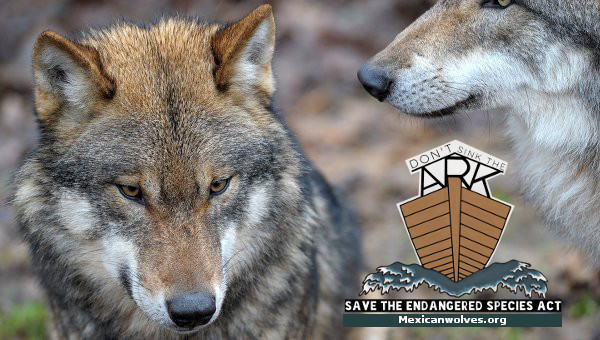25
Sep
In the News: Environmentalists, ranchers trade barbs in killing of Mexican gray wolf

Environmentalists and livestock owners are pointing fingers after government agents killed an endangered Mexican gray wolf last month for preying on cattle, the first wolf killed for depredation in 10 years.
The wolf was killed in August by the U.S. Department of Agriculture following an investigation into the deaths of four cattle in Apache County.
A Fish and Wildlife Service memo justifying the “lethal control” of the wolf found one calf had been “killed by wolves, one was probably killed by wolves, and a third (cow) died of natural causes” on Aug. 2. The death of another calf found a day later was attributed to wolf depredation.
Ranchers welcomed the action, saying Fish and Wildlife “was finally making a good decision.”
But environmentalists say ranchers are at least partly to blame for failing to remove the carcass of the cow that died of natural causes, attracting wolves from the “Diamond pack” that would otherwise have kept their distance.
“It was revealed that a dead cow — found around the same time as other cattle that were killed by wolves — was necropsied and found not to have been killed by wolves, but instead to have died from ingesting twine,” said Michael Robinson, a conservation advocate for the Center for Biological Diversity.”
“Those circumstances suggest the likelihood, as has happened in countless other instances, that the Diamond pack scavenged on the cow’s carcass and wolves were then drawn to prey on nearby, vulnerable cattle,” said Robinson.
He laid part of the blame for the killing of the wolf on the Trump administration, which he said was “so heartless” as to “gun down Mexican wolves on behalf of the livestock industry.”
Patrick Bray, executive vice president for the Arizona Cattle Growers’ Association, said the notion that dead cows attract wolves was “cockamamie” and a “junk opinion.” He said no rancher should be required to remove a cow’s carcass, which is actually beneficial for the environment, contributing to “a balanced ecosystem, by providing food for the coyotes.”
“Wolves are natural predators — live or dead they are going to prey on things,” he said. “They (government officials) didn’t kill a wolf because it was preying on dead animals, they killed it for preying on live livestock.”
Tanya Espinosa, a spokeswoman for the Agriculture Department’s Animal and Plant Health Inspection Service, said in an email that twine-eating cow’s death was not a factor in the decision to remove the wolf.
“The cow that ingested twine would not be considered wolf depredation, and in fact, was not a consideration for the removal of the wolf,” Espinosa said. “The wolf that was removed had attacked and killed multiple cattle at previous times.”
The killing was announced last week as part of a monthly Arizona Game and Fish Department report.
In justifying the killing, Fish and Wildlife noted a number of other cattle deaths had been reported in the area from late May through early August, but said only a handful were confirmed depredations.
Regina Mossotti of the Endangered Wolf Center cited USDA reports that “wolves account for a low number of livestock losses.”
“But it is a big deal for a rancher whenever there is a loss,” said Mossotti, director of animal care and conservation for the Missouri-based center.
She agreed with Robinson that carcasses may attract wolves, but stopped short of saying carcasses need to be removed.
“There are so many options from range riders, livestock guard dogs and more,” Mossotti said. “You can also prevent the wolves from coming back. You can bury the carcass, you can use chemicals that make the animal nauseous, a process called chemical taste-aversion.”
The sparring comes as the government faces a court-ordered Nov. 30 deadline to finalize a new management plan for the endangered wolves, which total an estimated 113 animals in southern Arizona and New Mexico and in northern Sonora state in Mexico.
Bray is already unhappy with that plan, which he said “goes far beyond recovery.”
“This is a failed plan, and if this is what it is we don’t want to be any part of it, and we don’t condone it,” he said, calling for a transparent and balanced system that accounts for the interests of farmers, environmentalists and the general public.
Mossotti said it is in the best interest of everyone to keep the population thriving.
“Wildlife like wolves keep out ecosystems healthy,” she said. “What we need is for everyone to come together for these plans.”
This article was published in the Tucson Sentinel and Cronkite News



